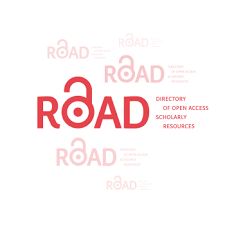Pengembangan Media Belajar Video Menggunakan Aplikasi Canva pada Materi Gerak Lurus Beraturan di Kelas XA SMA Negeri 1 Seponti
DOI:
https://doi.org/10.31571/jpsa.v6i2.6260Keywords:
Learning Media, Video, Canva, Aligned Straight MotionAbstract
The development of video learning media using the Canva application, which is a learning media in uniform straight motion material, is assessed based on the assessment of material experts and media experts, as well as the feasibility of student responses to its use which is intended to determine the feasibility of the media. This study uses the ADDIE model. This model consists of the stages of analysis, design, development, implementation and evaluation, which in the study were modified into the ADD model (ie Analysis, Design, Development). In this case, the researcher used 2 media expert validators and 2 material expert validators to test the feasibility of learning video media and the suitability of the material concept. In addition, researchers observed responses to media use from 32 students at SMAN 1 Seponti which were made using a validation questionnaire. Based on the validation carried out by the material validator, video learning media using Canva achieved an average score of 82% with a very feasible category for uniform straight motion material which was validated by media experts with an average percentage of 88.75% in the category Very feasible and responsive students towards media use achieved an average score of 80.4% in the 'Good' or 'Agree' category
Downloads
References
DAFTAR PUSTAKA
Arief, Sadiman,.2002. Media PendidikanPengertian, Pengembangan dan Pemanfaatan. Jakarta: Raja Grafindo. Hlm.47
Arsyad Azhar. 2015. Media Pembelajaran. Jakarta: Raja Grafindo Persada.
Budiwanto. S. 2012. Panduan Memahami Metodologi Penelitian. Malang: Intimedia
Djaali. 2013. Psikologi Pendidikan. Jakarta: Bumi Aksara. Hlm 121
Haka MJ, 2006. Teknologi Informasi, dan Komunikasi. Solo: CV. Haka MJ.
Iswadi, 2019. Teori Belajar. Bogor: iN Media.
Januszewski, A Molenda, M. 2008. Education Technology. Newyork: Taylor dan Prancis Group
Made Wena. 2012. Strategi Pembelajaran Inovatif Kontemporer, Jakarta: Bumi Aksara.
Riduwan. 2011. Skala Pengukuran Variabel-Variabel Penelitian. Bandung: Alfabeta. Rohman. M dan Amri, S. (2013). Strategi & Desain Pengembangan Sistem Pembelajaran. Jakarta: Prestasi Pustakaraya.
Setyosari. P. 2013. Metode Penelitian Pendidikan dan PengembanganSistem Pembelajaran. Jakarta: Kencana Prenada Media Group.
Sugiono. 2014. Metode Penelitian Pendidikan Pendekatan Kuantitatif, Kualitatif dan R&D. Bandung. Alfabeta
Downloads
Published
How to Cite
Conference Proceedings Volume
Section
License
Copyright (c) 2024 JURNAL PENDIDIKAN SAINS DAN APLIKASINYA

This work is licensed under a Creative Commons Attribution-NonCommercial 4.0 International License.
Authors who publish with this journal agree to the following terms:
Authors retain copyright and grant the journal right of first publication with the work simultaneously licensed under a Creative Commons Attribution License that allows others to share the work with an acknowledgment of the work's authorship and initial publication in this journal.
Authors are able to enter into separate, additional contractual arrangements for the non-exclusive distribution of the journal's published version of the work (e.g., post it to an institutional repository or publish it in a book), with an acknowledgment of its initial publication in this journal.
Authors are permitted and encouraged to post their work online (e.g., in institutional repositories or on their website) prior to and during the submission process, as it can lead to productive exchanges, as well as earlier and greater citation of published work.

 Download: 36
Download: 36










